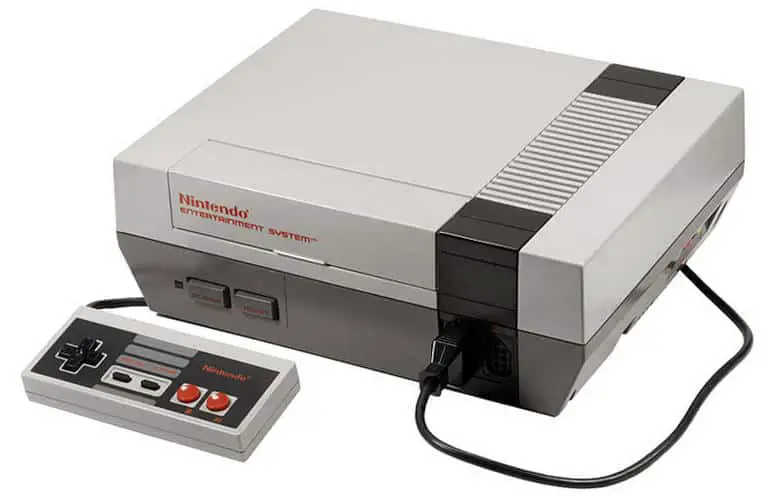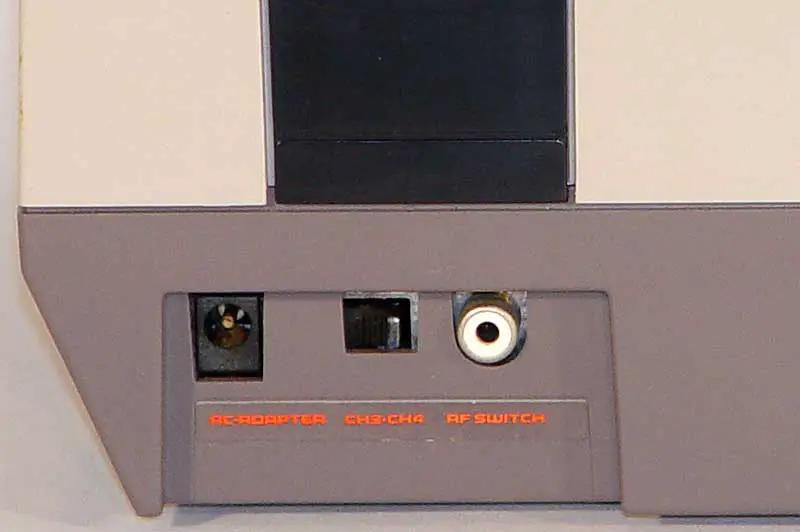
Table of Contents
How to hook up an original Nintendo Entertainment System to a smart tv or any other HDTV.
The Nintendo Entertainment System, commonly known as the NES, is one of the most iconic video game consoles ever made. First released in 1983 in Japan as the Family Computer (Famicom), the NES went on to sell over 60 million units worldwide and helped revive the video game industry after the 1983 crash.
Even decades after its initial release, the NES remains popular among retro gaming enthusiasts. The console is known for genre-defining games like Super Mario Bros., The Legend of Zelda, Metroid, and many more classics. However, connecting the original NES to modern TVs can be a challenge due to technological differences. Modern TVs use HDMI, while the NES was designed for older connection types like RF, RCA composite, and even antenna connectors.
Don’t let that stop you from revisiting this classic console! With the right adapters and cables, you can easily connect your NES to any modern TV. In this guide, I’ll walk you through the process step-by-step.
Key Takeaways:
- The NES uses older connection types like RF, RCA composite, and antenna connectors, while modern TVs use HDMI. Adapters are needed to convert the signal.
- RF connection provides the worst video quality but is the easiest to set up. Composite and HDMI give superior video quality.
- Composite and HDMI connections require their own specific cables and in some cases, adapters. Check the ports on your TV before buying cables.
- Avoid using low quality cables or adapters. This can introduce interference and signal degradation. Spend a little extra for good quality accessories.
- On HDTVs, make sure to enable the “Game Mode” for reduced input lag when playing NES games.
Getting Started: Determining Your TV’s Video Connection Options
The first step is to examine the available ports on your TV to determine which connection methods are possible. Modern TVs come in a variety of shapes and sizes, but will generally have some combination of the following:
- HDMI – The most common connection method used for modern devices. HDMI carries both video and audio signals digitally for the best quality.
- Composite – Typically used by older consoles. Composite cables have yellow (video), red, and white (audio) RCA connectors.
- Component – Slightly better than composite. Uses red, green, blue for video and red & white for audio.
- Coaxial or RF – The oldest connection type that carries analog video/audio over an RF signal. Uses a round F-type coaxial connector.
- Antenna – For TV broadcast signals. Only useful if your NES has an RF modulator built in.
Ideally, you’ll want to use HDMI or composite connections if possible for your NES, since these will provide the cleanest video feed. RF should only be used as a last resort due to poorer video quality.
If your TV only has an antenna connector, you’ll need an RF modulator to convert the NES signal. We’ll go over how RF connections work in more detail later.
Connection Methods:
Now let’s look at the best practices for setting up each type of connection.
HDMI
HDMI provides the highest quality digital video and audio output from your NES. However, getting HDMI output requires some form of converter:
- HDMI adapter – Adapters like the RetroTink 2X or RAD2X convert the analog video/audio signal from the NES to HDMI. This provides a lag-free digital output while preserving the original 240p video format. Make sure your adapter supports 240p.
- Upscaler – Devices like the Framemeister or OSSC convert analog video to HDMI by upscaling to higher resolutions. This introduces a small amount of lag but will improve video quality. May not support 240p.
To connect:
- Connect your NES to the HDMI adapter using high quality RCA composite cables.
- Enable the appropriate video mode on the adapter for NTSC NES.
- Connect the adapter via HDMI to your TV.
- On your TV, select the correct HDMI input and make sure Game Mode is enabled to minimize input lag.
The NES should now display on your TV through the HDMI adapter or upscaler in the highest quality possible. Make sure to use high quality shielded cables to prevent signal interference or degradation.
Composite Video
If your TV has composite inputs, you can connect the NES directly using composite cables:
- Use high quality shielded RCA composite cables designed specifically for retro consoles. Avoid cheap cables.
- Connect the yellow RCA plug to the yellow Video In jack on the TV.
- Connect the red and white RCA plugs to the corresponding left/right audio in jacks.
- On your TV, select the composite video input and make sure Game Mode is enabled.
- Set the TV format to NTSC for the NES video signal.
This provides good analog video and stereo audio directly through the composite inputs. Avoid using old cables or converters with composite as video quality can suffer.
RF/Coaxial Connection
If HDMI and composite connections aren’t options, you’ll have to use an RF connection:
- The NES will need an RF modulator to convert the video/audio signal to RF. Some models have this built in, others require an external modulator.
- Connect the NES to the RF modulator using RCA composite cables. Set the switch to Channel 3 or 4.
- Take the coaxial output from the modulator and connect it to the Coaxial/RF input on the TV.
- On the TV, select Channel 3/4 to match the modulator setting.
RF provides mono audio and the worst video quality, but is easy to set up. Try to use composite or HDMI connections when possible. RF should only be used as a last resort.
Using an Antenna Switch Box
If your NES model has a built-in RF modulator, you can use a 3-way antenna switch box:
- This has 1 antenna input and 2 outputs to connect 2 devices to your TV’s antenna jack.
- Connect the NES RF output to 1 switch input and your TV antenna cable to the other.
- Connect the combined switch output to the antenna input on your TV.
- Select the appropriate channel on the TV to view the NES or antenna signal.
- Use the button on the switch box to toggle between the NES and antenna.
This avoids having to unplug cables to change between the NES and TV channels. But again, RF should only be used if no other options are available.
Troubleshooting Issues:
Here are some common problems and solutions while connecting your NES:
No video output
- Check that all cables are securely connected at both ends.
- Try different video cables in case the one in use is defective.
- Ensure you’ve selected the correct input on the TV.
Black and white picture or no audio
- Use composite or HDMI cables instead of RF.
- On composite, make sure video and audio cables are plugged into the matching yellow, red, white inputs.
Picture is fuzzy, scrambled, or has static
- Adjust the physical connection points and check for any loose/defective cables, adapters, or modulators.
- Coaxial cables can degrade over time. Replace with a new high quality shielded cable.
Video flashing, rolling, or has black bars
- Try a different power supply for the NES in case voltage is unstable.
- Adjust the TV format/mode to match the NES video output (NTSC).
HDMI adapters don’t display 240p properly
- Enable the appropriate 240p mode on the adapter if available.
- Use an alternate HDMI adapter known to be compatible with 240p signals.
Following the steps in this guide carefully while using high quality cables and adapters should allow you to successfully connect your Nintendo Entertainment System to any modern TV. Just be prepared to troubleshoot minor issues as they arise. With some persistence, you’ll be enjoying the NES in top quality again.
Frequently Asked Questions
What is the best way to connect a NES to a modern 4K HDTV?
The best connection for 4K TVs is using a high quality HDMI adapter like the RetroTink 2X or RAD2X. These properly convert the 240p signal to HDMI for optimal image quality. Make sure to enable Game Mode on the 4K TV.
Will cheap composite cables work okay?
It’s best to avoid cheap unshielded composite cables. They often cause interference leading to degraded video quality. Spend a few extra dollars on high quality shielded cables specifically made for retro consoles.
Do I need an upscaler to make NES games look good on a modern TV?
An upscaler like the Framemeister or OSSC can help improve NES video quality on high resolution displays. But they aren’t required. Using a simple HDMI adapter will provide the cleanest digital output that maintains the native 240p resolution the NES outputs.
I only have a coaxial antenna input on my TV. What should I use?
If your TV only has an antenna input, you’ll need an external RF modulator to convert the NES audio/video signal to RF. Connect the modulator box to the NES using composite cables, then connect the RF out to the antenna input on the TV.
How do I reduce lag for playing NES games on a modern TV?
Enable Game Mode on your TV before connecting the NES. This will disable unnecessary video processing that adds input lag. Also stick to simple HDMI adapters instead of complex upscalers to keep the signal path as direct as possible.
Why does my NES have worse quality on HDMI compared to composite?
Some cheaper HDMI adapters don’t properly support the 240p video format that the NES outputs. Make sure your adapter is specifically designed for retro consoles and enables 240p compatibility modes for best results.
IF you appreciate some classic retro gaming and love to play games on a NES but have a new HDTV or Smart TV, you may find some difficulty in working out the best way to connect it up to achieve the best picture quality.
Some of the retro gaming community prefer the authentic look of an original CRT TV when using old consoles or computers but some of us would just like the simplicity of just using our main living room TV.
Many new TV do not have the analogue RF tuner required to connect the NES via the RF output so cant be traditionally tuned in.
A Device is needed to demodulate the RF signal and convert it into a digital signal that a modern TV can use. Have a look on Amazon Here

